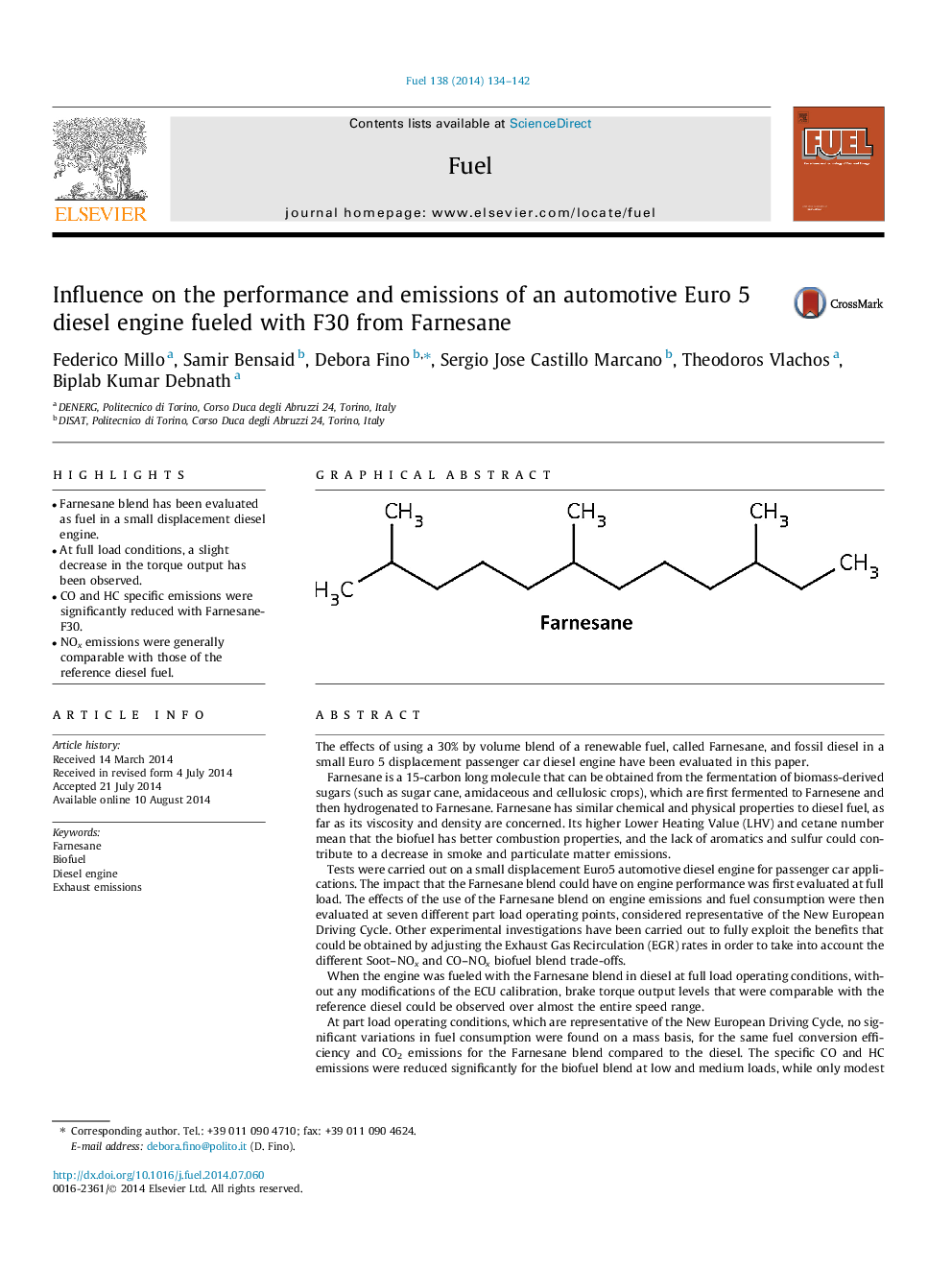| کد مقاله | کد نشریه | سال انتشار | مقاله انگلیسی | نسخه تمام متن |
|---|---|---|---|---|
| 206006 | 461135 | 2014 | 9 صفحه PDF | دانلود رایگان |

• Farnesane blend has been evaluated as fuel in a small displacement diesel engine.
• At full load conditions, a slight decrease in the torque output has been observed.
• CO and HC specific emissions were significantly reduced with Farnesane-F30.
• NOx emissions were generally comparable with those of the reference diesel fuel.
The effects of using a 30% by volume blend of a renewable fuel, called Farnesane, and fossil diesel in a small Euro 5 displacement passenger car diesel engine have been evaluated in this paper.Farnesane is a 15-carbon long molecule that can be obtained from the fermentation of biomass-derived sugars (such as sugar cane, amidaceous and cellulosic crops), which are first fermented to Farnesene and then hydrogenated to Farnesane. Farnesane has similar chemical and physical properties to diesel fuel, as far as its viscosity and density are concerned. Its higher Lower Heating Value (LHV) and cetane number mean that the biofuel has better combustion properties, and the lack of aromatics and sulfur could contribute to a decrease in smoke and particulate matter emissions.Tests were carried out on a small displacement Euro5 automotive diesel engine for passenger car applications. The impact that the Farnesane blend could have on engine performance was first evaluated at full load. The effects of the use of the Farnesane blend on engine emissions and fuel consumption were then evaluated at seven different part load operating points, considered representative of the New European Driving Cycle. Other experimental investigations have been carried out to fully exploit the benefits that could be obtained by adjusting the Exhaust Gas Recirculation (EGR) rates in order to take into account the different Soot–NOx and CO–NOx biofuel blend trade-offs.When the engine was fueled with the Farnesane blend in diesel at full load operating conditions, without any modifications of the ECU calibration, brake torque output levels that were comparable with the reference diesel could be observed over almost the entire speed range.At part load operating conditions, which are representative of the New European Driving Cycle, no significant variations in fuel consumption were found on a mass basis, for the same fuel conversion efficiency and CO2 emissions for the Farnesane blend compared to the diesel. The specific CO and HC emissions were reduced significantly for the biofuel blend at low and medium loads, while only modest or even insignificant variations were registered at higher loads. The NOx emissions with the biofuel blend were generally comparable with those of the reference diesel fuel, while a noticeable reduction in smoke level was generally observed for medium and high load operating conditions.Finally, the Soot–NOx and CO–NOx trade-off, obtained from EGR sweeps, has highlighted the possibility of obtaining some further emission benefits through a better exploitation of the biofuel characteristics by means of a more extensive ECU recalibration.
Figure optionsDownload as PowerPoint slide
Journal: Fuel - Volume 138, 15 December 2014, Pages 134–142